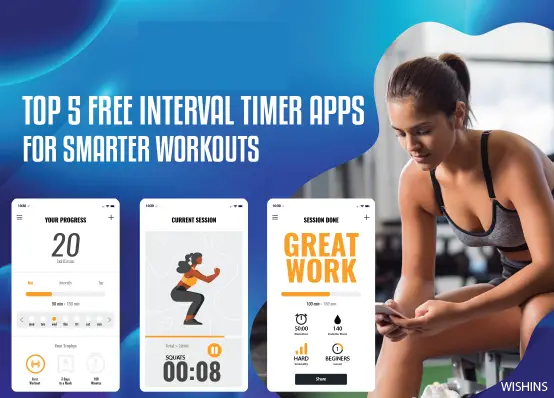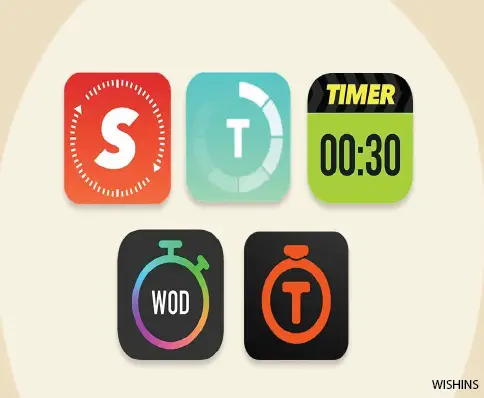Introduction: The Importance of Interval Timer App for Fitness and Productivity
Interval training has become increasingly popular in recent years due to its effectiveness in improving fitness levels and burning calories. This type of training involves alternating periods of high-intensity exercise with periods of rest or low-intensity exercise. Similarly, productivity techniques such as the Pomodoro method involve breaking work into intervals to increase focus and productivity. Interval timers are essential tools for both interval training and productivity techniques, as they help users keep track of time and stay on track with their goals. Interval timer app can enhance these practices by providing users with a visual and auditory cue to switch between high-intensity and low-intensity periods. This helps users maintain their pace and intensity throughout their workout or work session, leading to better results. Additionally, interval timers can help users stay motivated by providing a sense of accomplishment as they complete each interval.
Understanding the Concept of Interval Timers and How They Work
An interval timer is a tool that allows users to set specific intervals for their workouts or work sessions. It functions by setting a timer for a specific amount of time, followed by a rest period or low-intensity period. There are different types of interval timers available, including manual timers, digital timers, and app-based timers.
Manual timers are simple devices that require users to manually set the timer for each interval. Digital timers are more advanced and allow users to set multiple intervals with different durations and rest periods. App-based timers are the most popular type of interval timer, as they offer a wide range of features and customization options.
Identifying the Key Features of a Perfect Interval Timer App
A good interval timer app should have essential features such as customizable intervals, sound alerts, and the ability to save and share workouts. Customizable intervals allow users to set specific durations for their high-intensity and low-intensity periods, while sound alerts provide an auditory cue to switch between intervals. The ability to save and share workouts allows users to track their progress over time and share their workouts with friends or trainers.
Other important features include the ability to create multiple workouts, integration with other fitness apps or devices, and the ability to customize the user interface. These features are important for user experience and functionality, as they allow users to tailor the app to their specific needs.
Choosing the Right Platform and Technology for Your App
When developing an interval timer app, it is important to choose the right platform and technology for your app. There are different platforms available such as iOS, Android, and web-based platforms. Each platform has its own advantages and disadvantages, so it is important to choose the one that best suits your needs.
In terms of technology, there are different programming languages such as Swift for iOS development and Java for Android development. It is important to choose the right technology based on your development team’s expertise and the app’s requirements.
Designing the User Interface and User Experience of Your App
A good user interface (UI) and user experience (UX) are essential for any app’s success. When designing an interval timer app, it is important to keep the UI simple and intuitive while providing users with all the necessary features.
Best practices for designing an effective UI include using clear typography, consistent color schemes, and easy-to-use navigation menus. Additionally, it is important to test the app’s UI with real users to ensure that it is easy to use and understand.
Developing the Backend and Database Architecture of Your App
The backend architecture of an app refers to the server-side components that handle data storage, processing, and communication between different parts of the app. When developing an interval timer app, it is important to ensure that the backend architecture is scalable and can handle large amounts of data.
Best practices for developing a scalable backend architecture include using cloud-based services such as Amazon Web Services (AWS) or Google Cloud Platform (GCP), using microservices architecture, and implementing caching mechanisms.
Integrating Third-Party APIs and Services for Enhanced Functionality
Integrating third-party APIs and services into an interval timer app can enhance its functionality by providing additional features such as heart rate monitoring or GPS tracking. Some useful APIs for interval timer apps include Apple HealthKit or Google Fit for fitness tracking data, or Spotify or Apple Music for music integration.
When integrating third-party APIs into an app, it is important to ensure that they are secure and reliable. Additionally, it is important to test the integration thoroughly before launching the app.
Testing and Debugging Your App to Ensure Quality and Performance
Testing and debugging an app before launch is essential for ensuring quality and performance. Best practices for testing an interval timer app include using automated testing tools such as XCTest or Espresso, testing on multiple devices with different screen sizes, and testing under different network conditions.
Additionally, it is important to identify any bugs or issues during testing and fix them before launching the app.
Launching Your App and Marketing it to Your Target Audience
Launching an interval timer app requires careful planning and execution. Best practices for launching an app include creating a landing page or website for the app, creating social media accounts for the app, reaching out to influencers or bloggers in your niche, offering promotional discounts or free trials, and optimizing your app store listing with relevant keywords.
Maintaining and Updating Your App to Keep Up with User Needs and Trends
Maintaining an interval timer app requires ongoing updates based on user feedback and changing trends in technology or fitness practices. Best practices for maintaining an app include regularly updating the app with new features or bug fixes based on user feedback, monitoring user reviews on app stores or social media platforms, staying up-to-date with new technologies or fitness trends in your niche.
Conclusion:
Building an interval timer app requires careful planning, execution, testing, marketing, maintenance, and updates based on user feedback. By following best practices in each stage of development, you can create a successful interval timer app that helps users achieve their fitness goals or increase productivity in their work lives.







